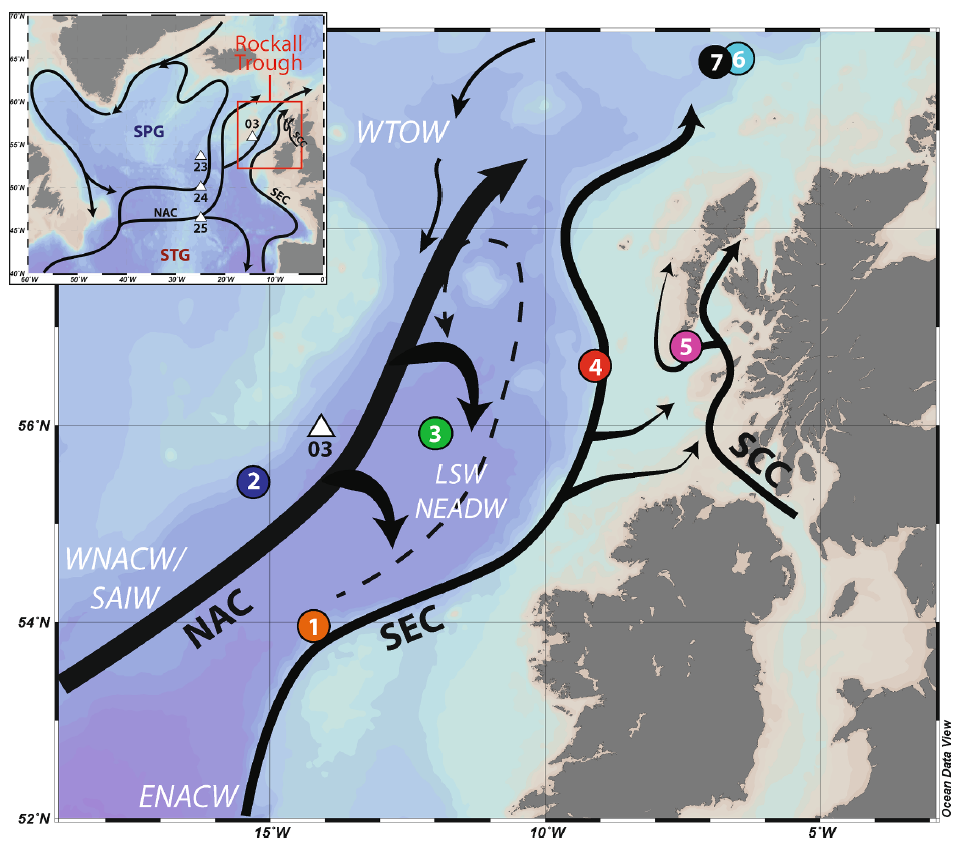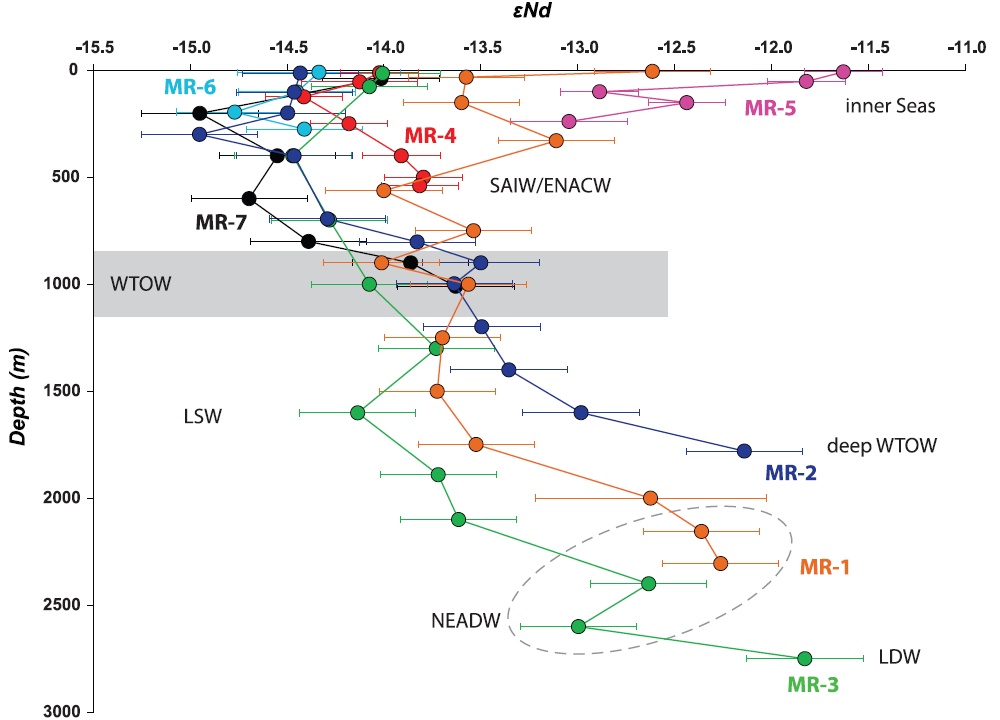Rare Earth Element (REE) concentrations and Nd isotopic compositions (εNd) of five new seawater profiles scattered across the Rockall Trough (North-East Atlantic, Fig. 1) were investigated in order to: (1) establish the seawater εNd distribution in the Rockall Trough, which is poorly known so far; (2) identify the southward-flowing Wyville-Thompson Ridge Overflow Water (WTOW) originating from the Nordic Seas; (3) evaluate the potential impact of lithogenic sources on the seawater εNd in the Rockall Trough. Combined with two previously published seawater stations, the results reveal a spatial εNd gradient in the upper layer (roughly the first 900 m) of the Rockall Trough with εNd values ranging from −14.9 ± 0.3 to −11.6 ± 0.2 (Fig. 2). The influence of Nd lithogenic inputs through seawater-sediment interactions have been found to be likely negligible, so the spatial gradient has been attributed to the relative influence of unradiogenic Subpolar Gyre (SPG) water carried by the North Atlantic Current (NAC) and more radiogenic water derived from the Subtropical Gyre (STG) flowing into the Shelf Edge Current (SEC) along the European margin.

Freshwater from the interior seas (Northern UK) is an additional source of radiogenic εNd, although it seems restricted to the shallow continental shelf. Below the upper layer, WTOW has been characterized for the first time with εNd (mean value of −13.8 ± 0.5; n = 9) as a homogeneous intermediate water body between 600 and 1200 m. The results reveal a strong modification of the outflowing water from the Norwegian Sea that cascades through the Wyville-Thompson ridge, as WTOW in the Rockall Trough is composed of more than 80 % Atlantic water. On the western flank of the Rockall Trough, a deep WTOW component has been identified that is responsible for a modification of the Labrador Sea Water (LSW) εNd values (-13.0 ± 0.3 to −12.1 ± 0.3). Two stations separated by only a few kilometers from each other but sampled four years apart (2012 and 2016) show a multi-annual variation of water properties and εNd values (∼1 ε-unit) for the first 800 m, pointing to a change in the relative contribution of both SPG and STG to the composition of water flowing in the Rockall Trough to the Nordic Seas. Overall, these results confirm that εNd can be used to assess the water mass composition in the Rockall Trough, allowing to reconstruct North Atlantic gyre dynamics in paleoceanographic studies.

Reference:Quentin Dubois-Dauphin, C. Colin, M. Elliot, J. Forstel, F. Haurine, R. Pinna, E. Douville, N. Frank., 2023. The spatial and temporal distribution of neodymium isotopic composition within the Rockall Trough. Progress in Oceanography, 2023, 218, 103127, DOI : 10.1016/j.pocean.2023.103127






